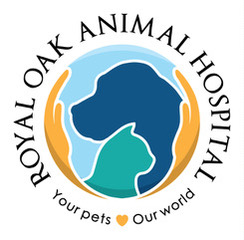Library
-
**This article has been specifically written for pet sitters and how they can reduce their exposure to COVID-19.** COVID-19 is a new respiratory disease in humans, initially discovered late in 2019. Although all coronaviruses are related, they are not all the same virus. As a pet sitter, it is important to limit direct contact with your clients. People can shed the virus without showing any symptoms of disease, so it is important to practice social distancing even with clients who appear healthy. It is also important to limit your contact with potentially contaminated items in your clients’ homes, whether they are at home or not. The most important things you can do to minimize your risk of infection, and minimize the risk of transferring infection to your clients, is to be cautious when interacting with clients and when touching anything that could be contaminated. Communicate with your clients regularly during this pandemic. Having information about your clients’ health can help you avoid taking unnecessary risks. Finally, if you develop any signs of COVID-19, including cough, fever, and/or shortness of breath, it is important that you stay home from work.
-
Toxoplasma occurs worldwide. However, infection is uncommon in pet cats that do little or no hunting and primarily or exclusively eat commercial cat foods. Despite the high number of cats infected with T. gondii, very few show significant clinical signs. Humans are most commonly infected by eating contaminated food. Most people infected with this organism do not develop clinical disease. However, infection during pregnancy may be transmitted to the fetus and sometimes cause severe damage. Many pet cats will never be exposed to Toxoplasma and, therefore, cannot pass the infection on to humans.
-
Tularemia is an infection of the bacteria Francisella tularensis and is most common in rabbits and rodents. Infection in cats occurs from ingestion of an infected animal, drinking contaminated water, or getting bitten by a blood-sucking insect. Clinical signs include enlarged lymph nodes and draining abscesses. Treatment includes antibiotics, surgical removal of any draining abscesses, and any other supportive care warranted by the cat's condition. Tularemia is a reportable zoonotic disease.
-
Tularemia is an infection of the bacteria Francisella tularensis and is most common in rabbits and rodents. Infection in dogs occurs from ingestion of an infected animal, drinking contaminated water, or getting bitten by a blood-sucking insect. Tularemia causes mild illness in healthy dogs. More severe clinical signs include enlarged lymph nodes and draining abscesses. Treatment includes antibiotics, surgical removal of any draining abscesses, and any other supportive care warranted by the dog's condition. Tularemia is a reportable zoonotic disease.
-
Vaccines are necessary to reduce infectious disease-caused illnesses in cats. They work by stimulating the body's immune system to recognize and fight a particular microorganism such as a virus, bacteria, or other infectious organism. The vaccine helps the body prevent infection or lessen the severity of the infection, and promotes rapid recovery.
-
Veterinarians routinely recommend certain vaccines for all dogs (called core vaccines) while they recommend others more selectively, according to the dog’s environment and lifestyle. Vaccines work by stimulating the body's immune system to recognize and fight particular microorganisms such as a virus, bacteria, or other organism. The vaccine helps prevent infection or lessens the severity of infection and promotes rapid recovery.
-
The West Nile Virus (WNV) is transmitted by the bite of a mosquito (primarily Culex species) that is infected with the virus. Birds are both susceptible to the virus and can act as a host, though indigenous birds such as owls, hawks, eagles, crows, and jays appear to be most at risk in comparison to pet birds. There is no specific treatment once a bird is infected so prevention is of high importance.
-
Whipworms are intestinal parasites measuring about 1/4 inch (6 mm) in length. They live in the intestinal tract of cats where they can cause severe irritation. Whipworm infection results in watery diarrhea, weight loss, and general debilitation. Fecal testing will not detect every infection. Whipworm infection in cats is rare in North America but cases appear to be rising.
-
A zoonosis is a disease or infection that can be transmitted from animals to humans. Although cats only pose a mild risk of causing disease in humans, those with immunosuppressive conditions such as HIV or those receiving chemotherapy are at higher risk of becoming ill from these infections. The most common and significant infections that humans can get from their cats include rabies, cat scratch disease, toxoplasmosis, and ringworm. Feline leukemia virus (FeLV) and feline immunodeficiency virus (FIV) are not zoonotic. Hygiene plays an important role in preventing the spread of these diseases, as well as preventive medicine for your cat, including regular deworming and external parasite preventives. Keep your cat indoors to minimize exposure to zoonotic diseases.
-
A zoonosis is a disease or infection that can be transmitted from animals to humans. Although dogs only pose a mild risk of causing disease in humans, those with immunosuppressive conditions such as HIV or those receiving chemotherapy will be at higher risk of becoming ill from these infections. The most common and significant infections that humans can get from their pet dogs include rabies, leptospirosis, ringworm, and gastrointestinal illness such as Salmonella and Campylobacter. Hygiene plays an important role in preventing the spread of these diseases, as well as preventive medicine for your dog, including regular deworming and external parasite preventives.


